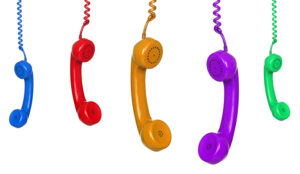Chris Key from Hostcomm argues that by integrating your CRM database with a predictive dialler you can make your customer service much more proactive.
Contact centre managers typically want to give the best possible customer service and maximise the volume and quality of outbound calls. But these two things are at odds with each other, as spending more time on one usually compromises time spent on the other.
How can you balance these two things more effectively?
The solution is automation: integrating your customer relationship management (CRM) database with a predictive dialler. You get quality data from a system like Microsoft Dynamics or Salesforce, and your agents spend less time planning calls or waiting for them to come through. This leads to more time being spent talking to people and better customer service.
Here are 5 ways you can increase automation in your contact centre with a CRM/predictive dialler set-up.
1. Automate your outbound calls
Outbound calls are at the heart of what a call centre does. With your dialler pulling numbers from your CRM data, you can quickly launch campaigns based on all data or targeted customer segments.
What’s more, a predictive dialler will line up calls based on average talk time. Your agents experience less downtime and make more calls per hour.
2. Automate follow-up SMS messages and emails
After a call, sending an SMS or email can be an effective way to summarise conversations or encourage further action. But it takes time for agents to send these messages out.
Instead, you can automate your workflow so messages are sent automatically following every call or based on certain criteria. Your customers get follow-up messages quickly and efficiently, while your agents carry on doing what they do best.
3. Automate printed material dispatch
From forms to brochures, sometimes you’ll need to send printed material out to customers. If you thought sending an SMS or email was time consuming, printing and packing mail is worse.
That’s why automation covers print too, sending merged documents to your chosen printer with no manual input from agents.
4. Automate call-backs and follow-ups
Quality call-backs and follow-ups are the secret to better results. They’re also a vital part of good customer service – if a customer asks you to call back at a better time, this needs to happen without fail.
To eliminate manual error, you can automatically schedule calls to occur at specific times. These could be calls manually set up by agents, or automatic follow-ups a few days after material is sent out, designed to nurture leads and drive more sales.
5. Automate the logging of calls and actions
An automated and predictive dialling system is fully accountable, with detailed logs of calls made and actions taken stored consistently.
So, in the event of a dispute or uncertainty, you always have accurate data to fall back on.
The benefits of this approach are:
- Time-consuming manual tasks are carried out automatically
- Agents can concentrate on delivering better service on live calls
- Calls are lined up automatically from your CRM data, reducing downtime
- Manual error is eliminated in sending emails, SMS and printed materials
With thanks to Chris Key, CEO of Hostcomm
Author: Megan Jones
Published On: 16th Oct 2013 - Last modified: 28th Jun 2017
Read more about - Technology, Hostcomm






































I’m always hesitant to jump in and recommend automation because it can be the killjoy of customer relationships. While it’s true that you can streamline your own process, this kind of assembly line process management can dehumanize the customer and create a culture of numbers. While your output might be higher, the quality of your interactions might begin to suffer, which causes the greater damage to your long term bottom line.
If you can build a strong culture of “customer first” interactions, this kind of automation can streamline that process to greater efficiency without losing relationship quality.
Brad Hodson